Mertens Named WROF Scholarship Recipient

The Wisconsin Rural Opportunities Foundation, Inc. (WROF) is honored to announce Reed Mertens as the recipient of the WROF Premier Scholarship. This award is presented to high school graduate who is pursuing a college a degree here in Wisconsin with plans to return and thrive in a rural community. There were over 130 extremely qualified candidates that a committee of rural leaders vetted carefully and selected one overall winner to receive $5,000 towards their education.
Reed Mertens is a 2021 Thorp High School graduate and will be continuing his education at the University of Wisconsin-River Falls. The son of James and Kimberly, Reed was raised on dairy goat farm where his family milks 300 goats. He assists daily with milking, animal health, and feeding. His own herd of goats has grown to 30 head. Reed is also an accomplished outdoorsman. In the spring, he enjoys making maple syrup, fishing during the summer, and the fall hunting season.
Mertens graduated first in his class with a 4.0 GPA. During his high school tenure, he was active in football, serving as team captain his junior and senior years. He was also involved in track and field, FFA, National Honor Society, band, drama, the youth apprenticeship program, and the student run company of Sparks N’ Sawdust.
“I chose to major in agricultural business because my passion resides in agriculture. I chose ag business over other ag degrees because I noticed people have trouble, at times, understanding the relationship between business and farming. I hope to take over the family farm after college so I decided to go to college to get a degree that will hopefully help me improve and expand my goat dairy,” says Mertens.
“WROF is thrilled to award this scholarship to Reed Mertens. Reed wants to return to rural Wisconsin upon graduation from college and rural Wisconsin needs his abilities and drive. Our scholarship will allow him to focus on his studies, earn his bachelor’s degree and not worry about how he will finance his education. That’s a win-win for Reed and rural Wisconsin,” states Joan Behr, WROF Board President.
The Premier Scholarship was presented for the first-time last year. The inaugural winner was Peyton Mykel-Marie Clark from Ontario, Wisconsin. After a busy summer working on her home farm, taking two summer classes and showing cows at local fairs, Peyton is taking five classes this fall as she pursues her degree in Elementary Education.
Sheep Dairy Industry Small But Mighty
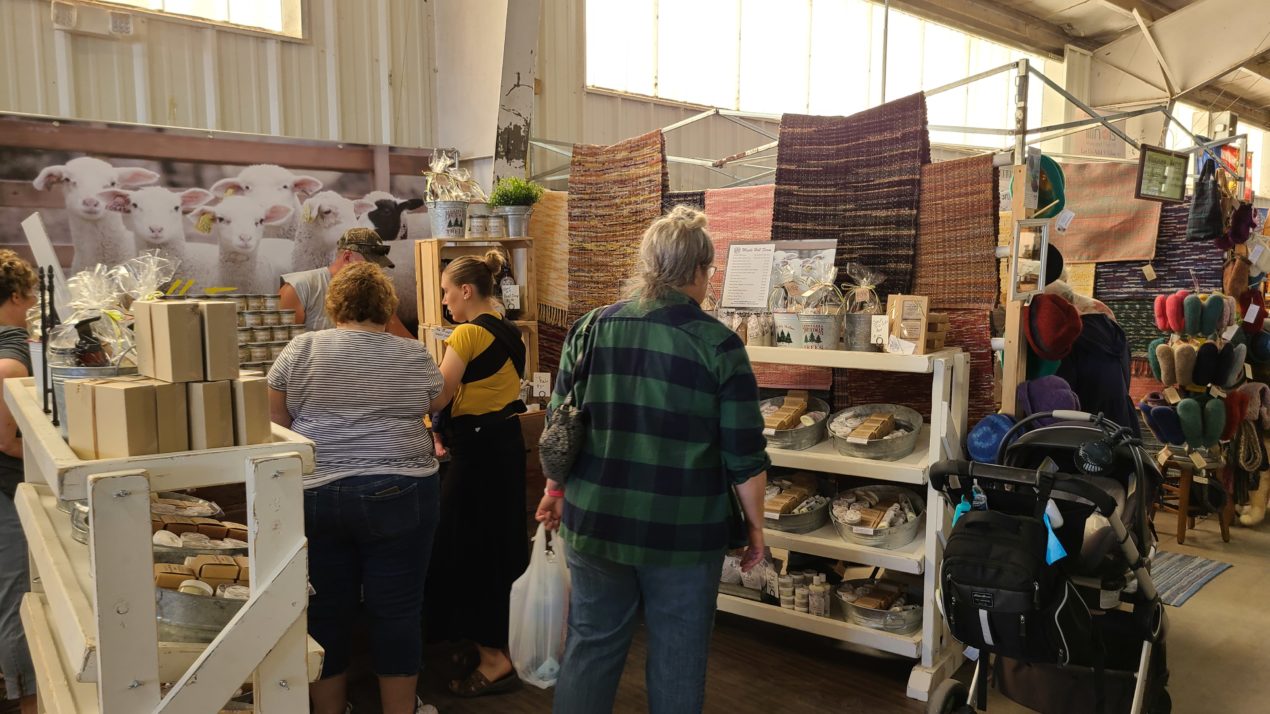
Wisconsin is the nation’s leader in dairy production, both when it comes to cows and goats. One less common, but still important piece to Wisconsin’s dairy industry is dairy sheep. A small but mighty industry, sheep milk products are gaining popularity with consumers and the small industry has a tough time even keeping up with growing demand.
Karen Nielsen, organization director for the Sheep Dairy Association of Wisconsin shares some of the unique qualities of sheep milk and details about the industry. Even though the industry is small, producers of dairy sheep are wide spread across the state of Wisconsin. Most of these sheep dairies ship their milk to be processed into cheese at multiple processors around the state.
There is somewhat of a difference in composition when comparing sheep and cows milk. Most notably, sheep milk is a bit more concentrated and higher in nutrient density, therefore giving it an advantage when it comes to processing. It takes less amount of milk to make the same amount of product. Cow’s milk contains more water, while sheep’s milk consists of about double the amount of fat and protein.
Hygiene products made with sheep’s milk are also becoming increasingly popular, especially for people with sensitive skin. Tammy and Brian Michielson, owners of Maple Hill Farm of Ladysmith, Wisconsin have expanded their business into creating a wide variety of these products. Tammy sells homemade soaps, lotions, bath products and many other things, made exclusively from their milking sheep flock. She mentions that the higher fat content in the milk helps to make the products more moisturizing and very popular with her customers. They milk about 75-100 sheep, with most of their milk going to cheese production. Michielson has continued to expand the business and also now has a greater online presence selling her products.
Pandemic Drove Horseback Riding
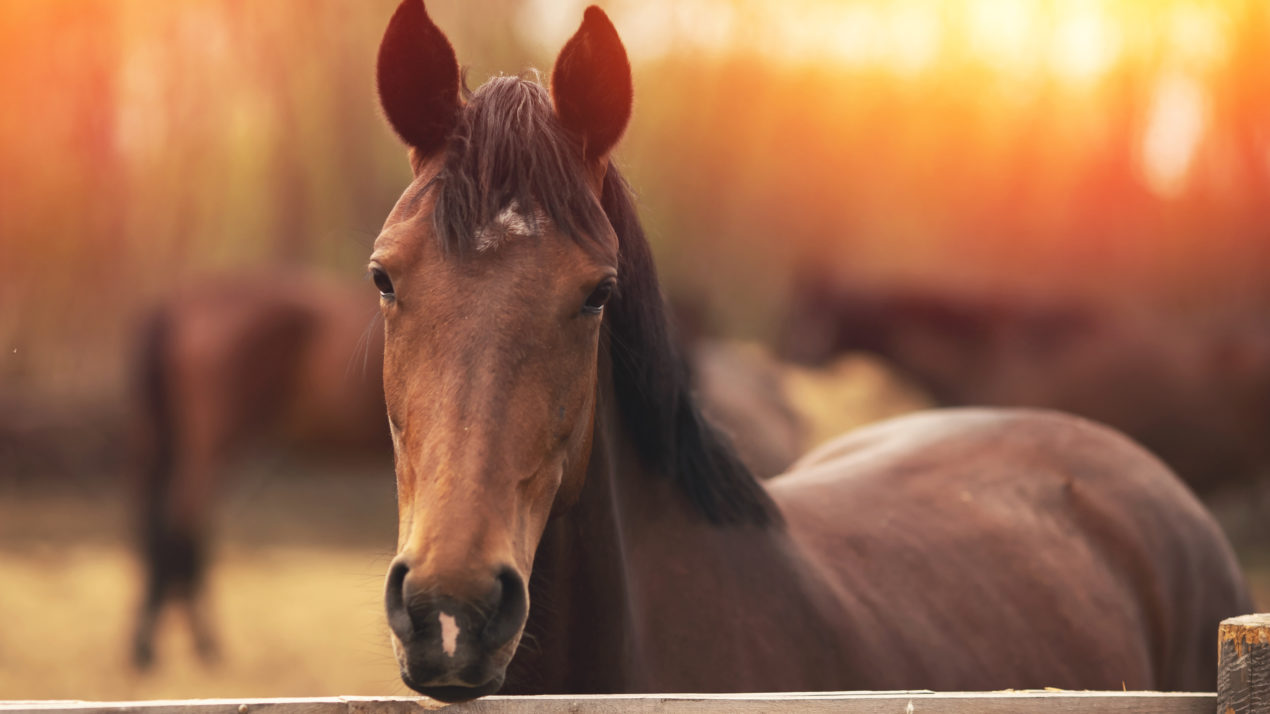
More people got involved in horseback riding during the pandemic due to the outdoor nature of the sport. This is according to Pam Prince of Trident Farm in Deerfield. Trident Farm boards, trains and breeds horses — they’ve got about 60 horses on the farm.
Prince says like other businesses, her family’s farm had to shut down at the beginning of the COVID-19 pandemic. Trident Farm received grants and loans through federal and local relief programs to help with expenses, such as feed, when the business was unable to hold lessons.
Trident Farm was able to open back up to the public quickly because it was outdoors. Pam says it’s a sport that drew new riders, both adult-age and kids, and the business grew. She adds she believes the interest will continue even after the pandemic is over. The anecdotal response from clients is that riding and caring for horses is enjoyable, a fun family activity and good exercise.
Prince also gives Mid-West Farm Report a feel for just how labor intensive horses are — the animals require a lot of attention. Horses require vet visits, careful feeding and special grooming. Trident Farm feeds its horses free-choice hay, meaning hay is out all the time. It includes both grass and alfalfa hay. Not all stables use the same ratios. Trident Farm also has a grain nutrition program curated to each horse.
She says costs have been relatively steady for the grain, but hay continues to go up every year.
Excellence In Ag Finalists Announced
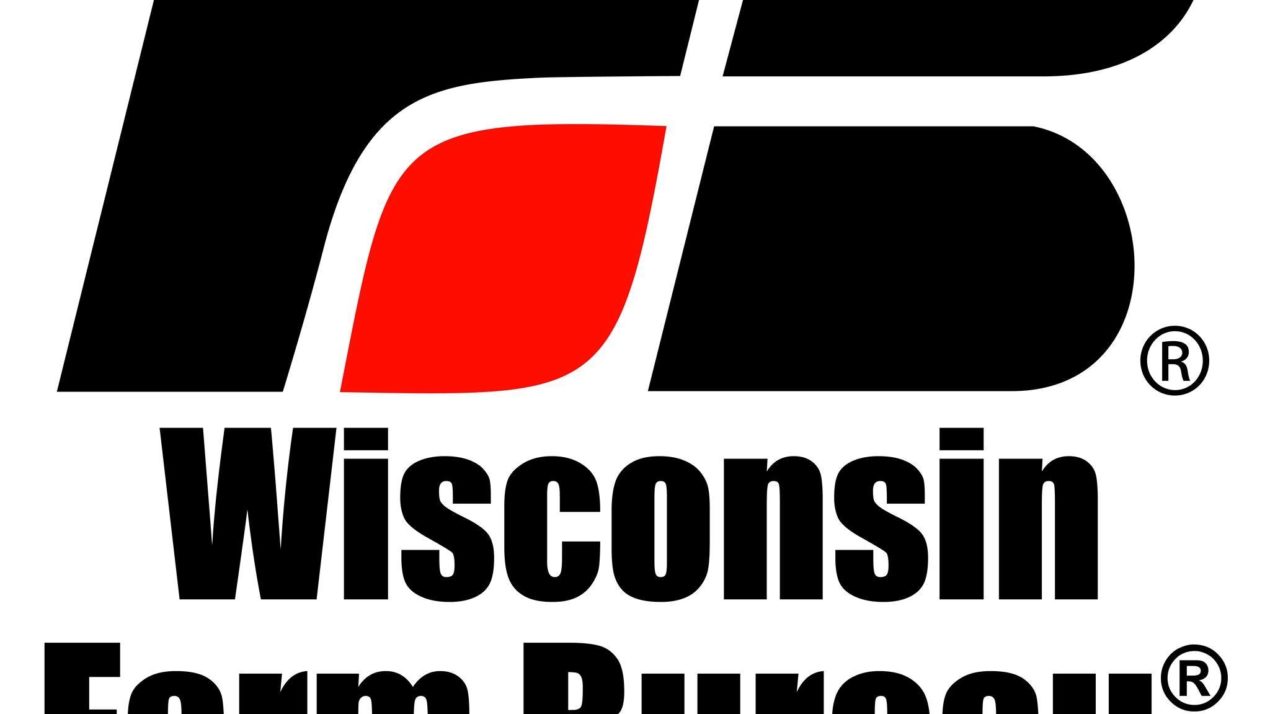
Four individuals have been selected as Wisconsin Farm Bureau’s Excellence in Ag finalists and will compete in December for the top honor.
The Excellence in Ag award recognizes members of Farm Bureau’s Young Farmer and Agriculturist Program who excel in their leadership abilities and involvement in agriculture, Farm Bureau and other civic and service organizations.
“We have four outstanding agricultural advocates in this year’s state competition,” said Kevin Krentz, WFBF President. “This contest highlights these individuals and how they have positively impacted both Wisconsin agriculture and Farm Bureau, and inspires others to do the same.”
The four finalists are:
- Stephanie Abts of Manitowoc County. Stephanie is a dairy nutritionist at Rio Creek Feed Mill, Inc.
- Julie Sweney of Dodge County. Julie is the director of communications and marketing at FarmFirst Dairy Cooperative in Madison.
- Julie Wadzinski of Barron County. Julie is a farm operations instructor at Northwoods Technical College.
- Kellie Zahn of Shawano County. Kellie is an agriculture agent at the Stockbridge-Munsee Community.
Excellence in Ag award applicants are agriculturists who have not derived a majority of their income from a farm (that they own) for the past three years. Examples of occupations of past finalists include agricultural education instructor, fertilizer salesperson, veterinarian, farm employee, journalist and marketer.
Each finalist must make a presentation and answer questions in front of a three-judge panel during WFBF’s Annual Meeting and YFA Conference at the Kalahari Resorts in Wisconsin Dells, December 3-5. This year’s state winner will compete at the American Farm Bureau Federation’s 2022 Annual Convention in Atlanta, GA.
The Wisconsin Farm Bureau Foundation co-sponsors this contest with GROWMARK Inc. and Rural Mutual Insurance Company. Farm Bureau’s YFA program is open to members between the ages of 18 and 35. Information and applications for all YFA contests can be downloaded from wfbf.com.
Last year’s Excellence in Ag award recipient was Natasha Paris from Green Lake County.
Dairy Essential To School Age Students

The following is an editorial by Julie Sweney, Director of Communications at FarmFirst Dairy Cooperative.
Summer is officially in the rearview mirror, and teachers and kids are back in school. For some, the feeling of being back in the classroom is nearly electric – especially after the turbulent year that was 2020 thanks to COVID-19.
As students take their seats and teachers begin to teach, it’s important to ensure we’re providing the very best environment for these students to thrive. And that includes the food options available to them in the cafeteria. To be ready to learn, they must meet their body’s nutritional needs, and there’s one food ready to deliver: milk.
Certainly, milk has always had a presence in school cafeterias, but over a decade ago, legislation came forth with the intention to improve the health of school age children by allowing only low-fat and fat-free options, reducing calories and increasing the number of fruits and vegetables. While the intentions were sincere, the outcome was not ideal, as less milk was being consumed and too many full cartons were being tossed.
Since then, we’ve learned that reducing dairy options to low-fat and fat-free milk was not in the best interests of student nutrition – in fact, research shows that the higher the milkfat, the greater the benefit. Dairy has been continuing to advocate for progress in expanding milk options in schools, and provisions have been secured in Appropriations measures meaning that the provisions are limited to that year’s annual round of federal funding.
Thanks to Congressman Joe Courtney (D-CT) and Glenn Thompson (R-PA), who have authored the School Milk Nutrition Act (H.R. 4635), which would allow schools the option of offering low-fat flavored milk. This legislation, if passed, will codify into law the regulatory allowance that USDA has given school systems in recent years. This Courtney-Thompson bill helps position the dairy sector to secure a long-term fix within child nutrition legislation that hopefully both the House and Senate will consider in the coming months.
It’s about time.
FarmFirst Dairy Cooperative has been a long-time advocate for expanding milk options in schools. Advocating for this type of legislation has not been an easy task, as other pieces of legislation have taken the attention away from this one, but its relevance and importance has never been diminished.
Taking this notion one step further is another recently introduced piece of legislation, the Whole Milk for Healthy Kids Act (H.R. 1861), which would modify current law to allow schools to serve milk at all fat levels, both flavored and unflavored. This measure is authored by Reps. GT Thompson (R-PA) and Antonio Delgado (D-NY). If we truly cared about providing optimal nutrition to students in a variety of options, whole milk would become the standard milk option for schools to offer their students, and in a variety of flavors. Better yet, dairy options should be expanded beyond just fluid milk.
As we work to make higher-milkfat and flavored milk options more appealing to today’s youngest generation, the dairy industry needs to meet their expanding taste preferences while still providing a nutritional punch. Take the Sioux Falls, S.D. school district for example. Thanks to the Midwest Dairy Association, the Sioux Falls school district is providing a variety of dairy-focused breakfast and snack foods free of charge to its students of all ages. Fruit smoothies that are combined with whole grain are currently a popular item available on the schools’ “breakfast cart.” Last year, a smoothie program was launched in 13 Wichita, Kansas schools, which means the district served 300,000 more pounds of milk than usual between January and June 2021.
The idea behind the grab-and-go breakfasts is that students who are hustling to get to school on time don’t have to compromise on getting a strong start to their day in terms of nutrition. It seems like a solid investment for the school to have a student ready to learn, in addition to the dairy industry, as students come to love the tasteful, nutritional powerhouse in something as simple as a breakfast smoothie.
The innovation doesn’t stop there – smoothies are just one popular menu item that allows dairy to be more accessible to students and in a form they love to consume. Coffee is another popular option that goes hand in hand with milk and is making its way onto these breakfast carts in area high schools.
While these two pieces of legislation slowly make their way before Congress to be considered for a vote, school districts like Sioux Falls and Wichita are already proving the success of dairy’s presence in schools. Let’s not let this opportunity pass us by to ensure our students have a variety of dairy options available to them at school, including flavored and higher milkfat options, to support a healthy body and a healthy mind.
Hemp Transition Webinar Tomorrow

A reminder that the Wisconsin Department of Agriculture, Trade and Consumer Protection (DATCP) and the U.S. Department of Agriculture (USDA) will hold a joint webinar for hemp growers to learn how to locate and work with their local USDA office and how to apply for a USDA hemp license. This is in preparation for transitioning the hemp program to USDA on January 1, 2022.
When: Wednesday, September 15 from 1-3 p.m. View the agenda.
Growers can register for the webinar in advance with USDA. The webinar will be recorded and posted on the DATCP Hemp Program webpage when available.
If you plan to grow hemp in 2022, you should begin the licensing process now. This transition checklist is available for hemp growers to help guide you through the process of becoming a licensed hemp grower with USDA in 2022.
For more information about the transition to USDA, visit https://datcp.wi.gov/Pages/Programs_Services/HempTransition.aspx.
Join In Great Lakes Great Apple Crunch

Looking for a fun way to support Wisconsin farmers and the state’s farm to institution activities? If yes, sign up for the eighth annual Great Lakes Great Apple Crunch. The event, which takes place at noon on Thursday, Oct. 14 this year, involves hundreds of thousands of “crunchers” at schools, early care sites, colleges and hospitals across Wisconsin and the region all biting into locally-grown apples at the same time to create the “crunch heard around the region.”
It’s simple and easy to participate. Register at www.cias.wisc.edu/applecrunch, purchase local apples, and make your crunch plans for Oct. 14. Participants are encouraged to take photos of their crunch and share them on social media and with their school and community.
The first crunch event took place in October 2014, and was started as a program to encourage K-12 schools and other institutions to purchase more local foods. Since then, it has expanded to include all interested parties, including groups and individuals crunching from the office or at home.
After registering, participants receive a copy of the program’s “crunch guide” with tools to find Wisconsin apple growers, tasty apple recipes, and social media tips. For teachers, the guide also includes student lesson plans listed by age group.
“Every year it’s so fun to watch food service staff around the state discover how easy and exciting it is to purchase local apples, and how much kids and adults love eating them in the cafeteria,” says Vanessa Herald, farm to institution outreach specialist at the UW–Madison Center for Integrated Agricultural Systems. “We’re thrilled this event can promote farm to school and encourage folks to try buying more Wisconsin-grown foods.”
The Great Lakes Great Apple Crunch is a project of the Center for Integrated Agricultural Systems (CIAS) at UW–Madison. For more information, visit www.cias.wisc.edu/applecrunch or connect on Facebook (@GreatLakesGreatAppleCrunch), Twitter (@gr8applecrunch) or Instagram (@GreatAppleCrunch). Apple growers interested in farm to institution opportunities are encouraged to visit https://cias.wisc.edu/applecrunch/.
Iowa County Youth Show Off Skills
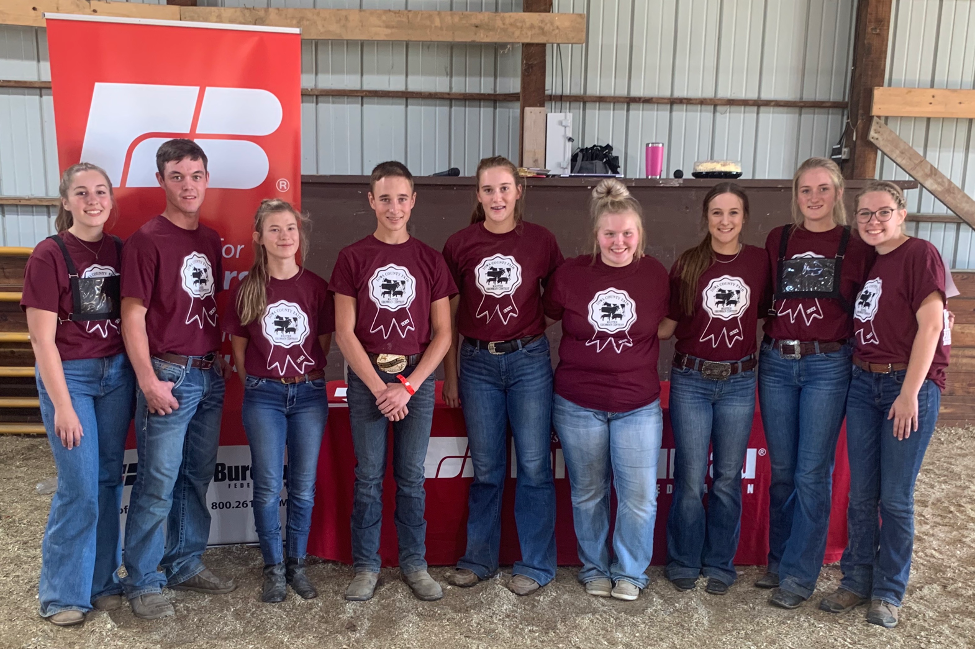
The 7th Annual Iowa County Master Showman Contest was held at the Iowa County Fair on Labor Day weekend. The top two senior showman from the beef, dairy, goat, sheep and swine project competed for the overall title of Master Showman.
The competition crowns an overall winner and runner-up. This year for the first time, two $1,000 scholarships were awarded to participants from previous years that are furthering their education at an accredited university or technical college.
Master Showman Contest participants complete against one another in showing all five species, beef, dairy, goat, sheep and swine. Exhibitors are evaluated on their ability to answer questions and how well they show each species in a series of rounds. The judges rank the participants on their showing ability, species knowledge and attitude in the show ring. Each judge is experienced in showing the livestock species they are observing. Judges for the event included: Beef – Grace Link, Dairy – Jenna Broege, Goat – Mackenzie Torstenson, Sheep – Ron Patterson and Swine – Kayla Klitzman.
At the end of the competition, exhibitors are asked to answer a question related to the livestock industry. This allows the participants to gain public speaking experience and it serves as a tie breaker for the competition. This year’s Iowa County Master Showman Contest winner was Joey Robinson from Mineral Point with Julia Searls from Cobb named runner-up.
Over the past four years, a benefit pie auction has been held at the conclusion of the competition. Participants from each species have made it a fun competition trying to raise the most money. After building a fund, the committee was able to award two $1,000 scholarships to past participants for the first time. Anyone who had previously competed in the contest and is furthering their education was eligible for the scholarship award. The inaugural recipients of this award were Nathan Daniels from Cobb and Morgan Vondra from Mineral Point. In addition to the scholarships, each of the ten participants received a $100 cash prize for partaking in the competition.
This year’s pie auction raised over $5,000 for future scholarships and prize money. The generosity of Iowa County families involved in the livestock project has allowed this program to continue to grow year after year. The Iowa County Master Showman Contest is comprised of Melissa (Doyle) Jacobson, Laura Daniels, Val Gaffney, Morgan Fitzsimmons and many additional volunteers. This group is excited for the future of this contest and hopes to continue to award scholarships and awards to the very deserving youth of Iowa County.
The Iowa County Master Showman Contest would not be possible without the support of the following generous sponsors: Iowa County Farm Bureau, Iowa County Farmers Appreciation Day, Gaffney Family Cattle and Lucky Cow Coffee and Gelato. To learn more or contribute to the Iowa County Master Showman Contest please contact, Morgan Fitzsimmons at [email protected]
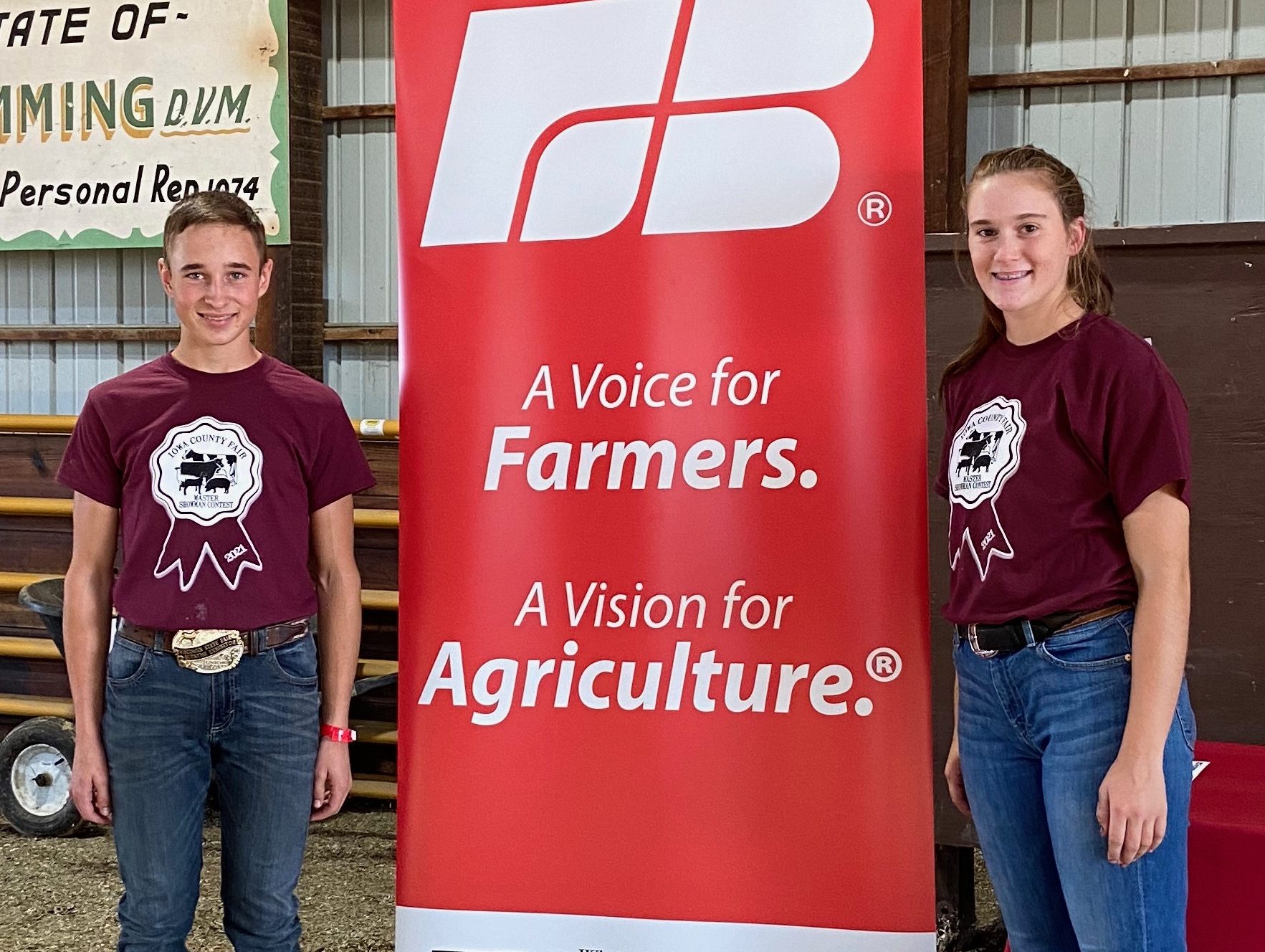
(L-R): Overall Master Showman Contest Winner, Joey Robinson, Mineral Point; and Master Showman Contest Runner-Up, Julia Searls, Cobb
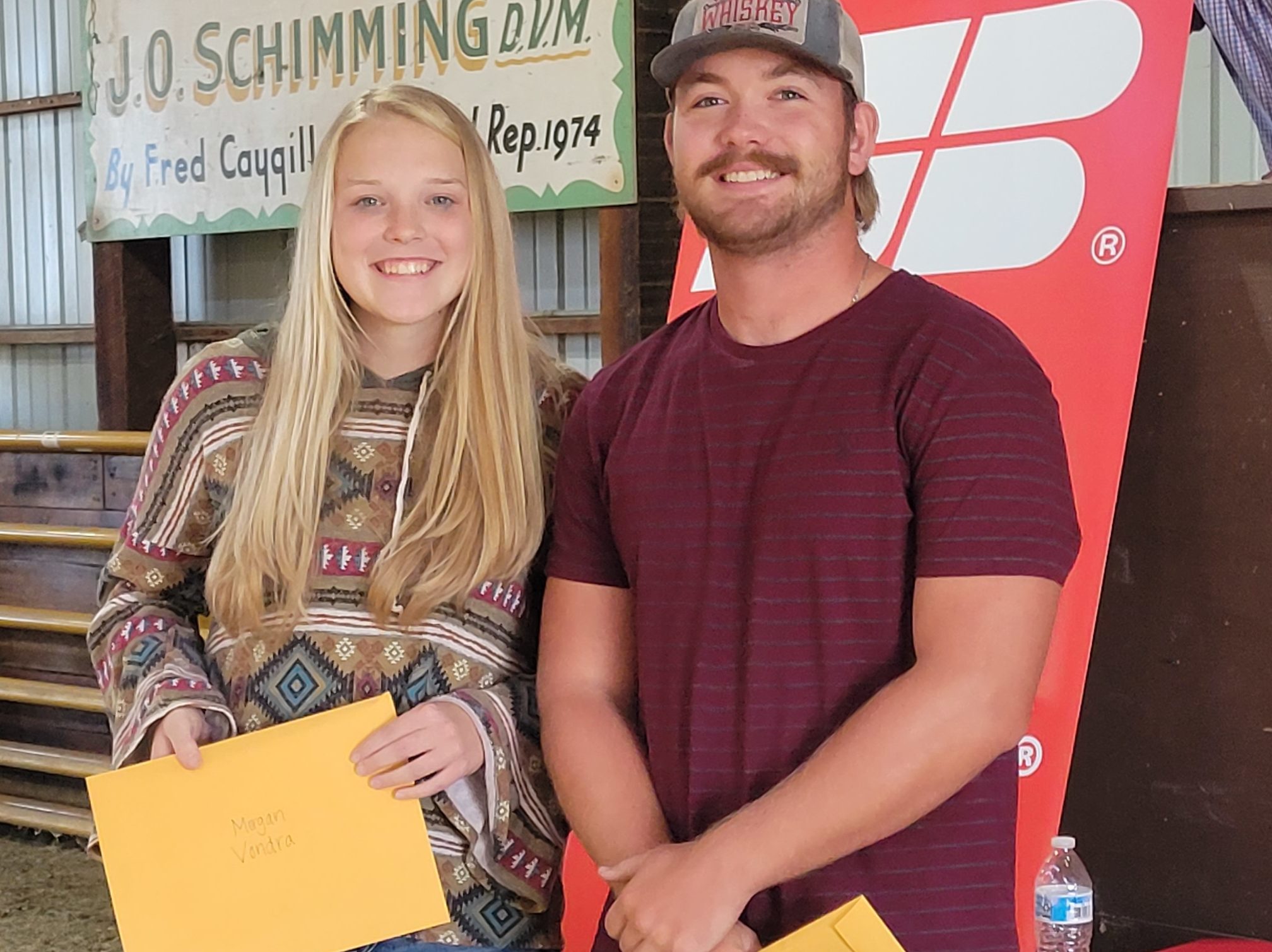
(L-R) Morgan Vondra, Mineral Point; and Nathan Daniels, Cobb
Watch Out For Overhead Lines
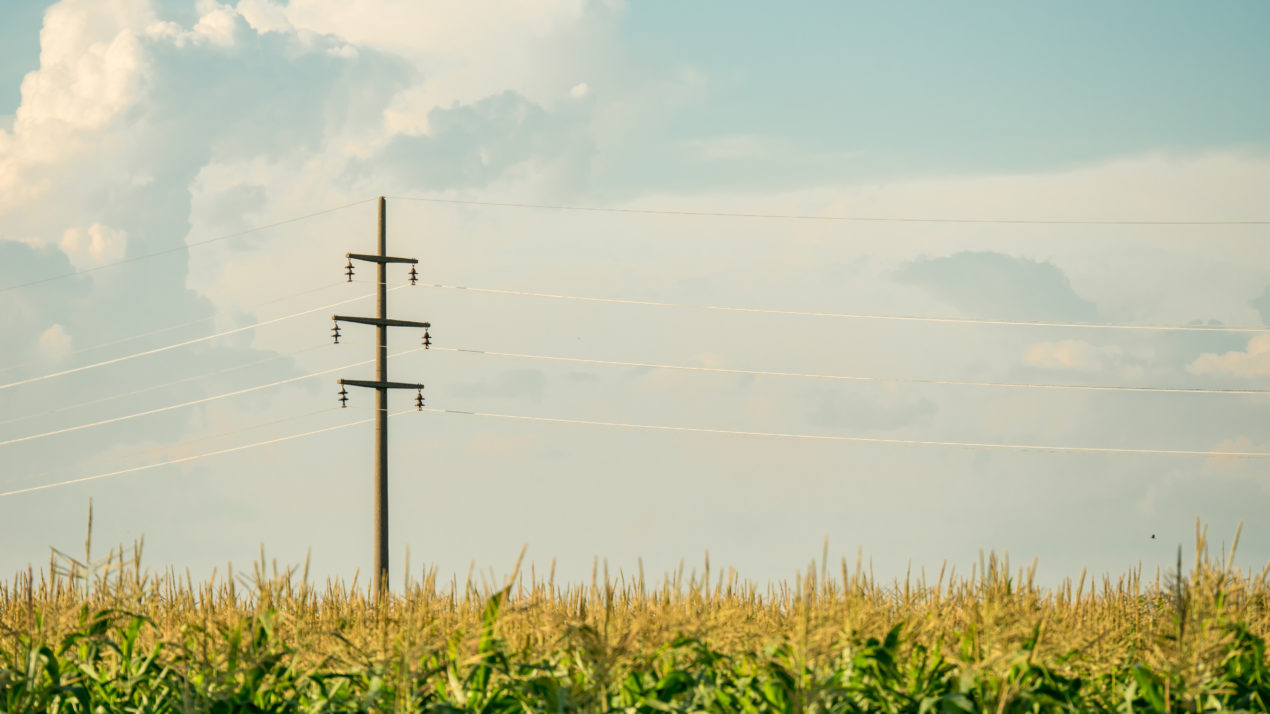
As the annual fall harvest begins, Alliant Energy urges farmers to know their surroundings and equipment sizes. This knowledge will help them avoid overhead power lines and keep them safe while in the fields.
Contact incidents with Alliant Energy’s electric power lines increase significantly during harvest season. There are three main reasons for this: More equipment is in the field; that equipment tends to be larger, like combines, wagons and tractors; and farmers work more hours in the dark when it’s difficult to see poles and wires.
Alliant Energy offers farmers the following safety tips to avoid injuries, property damage and contact with power lines:
- Know the height of your equipment and do not drive under power lines if any part of that equipment is too tall to fit below them. Power lines sit 18 feet above the ground.
- Be aware of your turning radius. Ensure your tractor and anything you’re pulling doesn’t swing into poles, pole guy wires or overhead lines when you turn, especially at the end of a row in the field.
- Stay alert when it gets dark. Know where the power lines are, especially after the sun goes down.
- Never assume a power line is safe to touch. If work requires you to be near a line, please call 1-800-ALLIANT and explain the situation. Alliant Energy will discuss it with you or come to your site and make the line safe.
Contact with a power line could interrupt electric service in the area. This could slow down any farming activities, such as grain drying, that require electricity and halt work until power can be restored.
If contact is made with a power line, do not touch the victim or item. Immediately call 911 and inform the dispatcher of the electrical accident. Always seek medical help for an electrical contact accident, as some injuries might not be visible or appear until several hours later.
Call 1-800-ALLIANT to report a downed power line. In addition, call 811 before doing any project that requires digging. Visit alliantenergy.com/farmsafety for more information.
Meat Exports Remain Strong

Prepared and written by Jeff Swenson, DATCP Livestock and Meat Specialist. The Market Update draws information from several sources, including trade publications, radio broadcasts, agricultural news services, individuals involved in the industry as well as USDA NASS and AMS reports.
■ Cash cattle trade was steady this week as packers entered the market at mid-week. Bids in the Southern U.S. for beef breed steers were mostly $124.00/cwt and mostly $126.00 to $127.00/cwt in the Northern U.S. The steady prices were also reflected at Wisconsin auction markets this week. Harvest numbers last week were estimated at 624,000 head, 27,000 head less than the previous week. The shortened week due to the Labor Day holiday will impact this week’s harvest numbers. Kevin Good of CattleFax presented to the Wisconsin Beef Council Board of Directors on Wednesday (9/9) and said the future favors the cow calf producer and feedlot operator. While the U.S. dairy cow inventory is the largest since 1995, the beef cow herd is decreasing due to drought and low profitability. While beef demand is the highest in 30 years, lower cattle supplies during the next five years should give the farm sector more bargaining power. However, that does not mean the retail price of beef will necessarily increase as cash cattle prices increase. Good also said that chicken consumption surged during the 1980’s, but beef has grown its market share from 40 to 48 percent since 1998.
■ Cash hog prices moved higher at mid-week. However, cash hogs and wholesale pork prices have been moving lower overall. Wednesday’s pork cutout was reported at $110.40. While that was up $4.73 on the day, the value was $125.68 two weeks ago. Pork production will finish lower in 2021 compared to the year before but is expected to increase by 1 percent in 2022. The USDA estimates pork production in China will decrease by 14 percent in 2022 due to African Swine Fever as will contraction due to low profitability. One estimate equates the 14 percent decrease of 1.8 million market hogs per week. Last week’s harvest estimate in the U.S. was 2.398 million head. That is 40,000 less head than the previous week and 68,000 head lower than the same week a year ago.
■ July was another good month for meat exports. It is important to note that many of the U.S. meat products that are exported are variety meats, which are typically non-muscle items like tongue, tripe, and other organs. These are often lumped in to the generalized categories of pork, beef, lamb, and poultry. July pork exports were steady with last year at 221,809 metric tons (mt), but export value jumped 20 percent to $657.3 million. Pork variety meat exports were especially strong at 49,092 mt, 16 percent above July 2019. Variety meat export value was the second highest on record at $116.7 million. July pork export value equated to $67.13 per head slaughtered, up 37 percent from a year ago. U.S. beef exports set another new value record in July. July export value climbed 45 percent from a year ago to $939.1 million, while volume was the third largest of the post-BSE era at 122,743 mt, up 14 percent year-over-year. July beef export value equated to $425.68 per head of fed slaughter, up 52 percent from a year ago. Lower demand in Mexico, the leading market, pushed July lamb exports 27 percent below last year in volume (1,166 mt) and 7 percent lower in value ($1.7 million). Through July, exports were still 13 percent above last year’s pace at 7,982 mt, with value up 10 percent to $10.8 million.
■ Choice beef breed steers and heifers at Wisconsin and surrounding state auction markets were mostly steady. High-yielding, high-grading cattle brought $109.00 to $127.00/cwt with highs to $130.00/cwt and some above. Choice and Prime Holstein steers were mostly steady, bringing $92.00 to $115.00/cwt. There were some packages of Holstein steers selling to $122.00/cwt. Silage fed, under finished, or heavy dairy breed steers brought $70.00 to $92.00/cwt. Dairy x beef steers were mostly $90.00 to $124.00/cwt. Cows were lower at $35.00 to $55.00/cwt. Blemish free cows in fleshier condition were selling to the upper $70.00s/cwt. Doubtful health and thin cows were bringing $39.00/cwt and down. Dairy breed bull calves were steady to higher at $30.00 to $90.00/cwt with heavier, well cared for calves up to $130.00/cwt. Beef and beef cross calves brought up to $290.00/cwt. Market lambs sold to $235.00/cwt.

